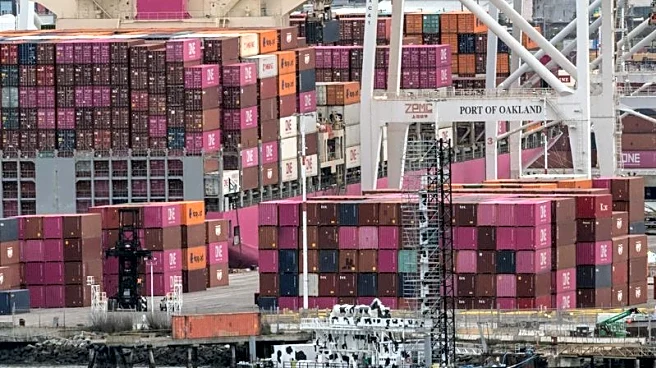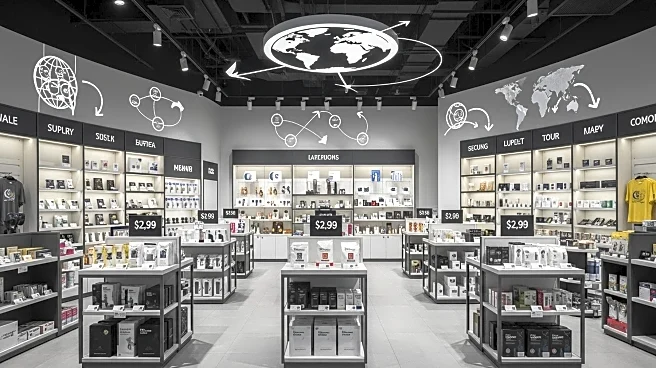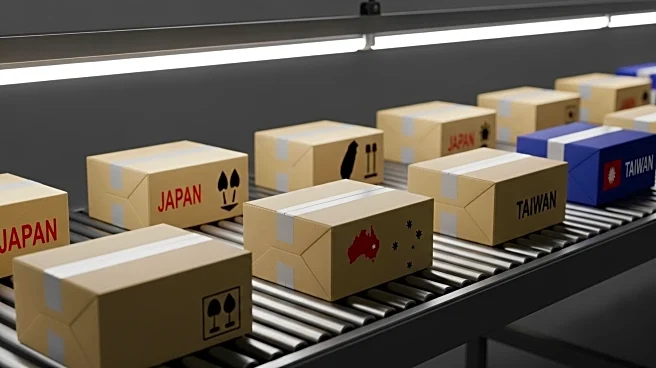What's Happening?
Best Buy is facing significant challenges due to U.S. tariff escalations, particularly on Chinese imports, which have reached 145%. The company is attempting to mitigate these impacts by diversifying its sourcing, reducing reliance on China from 55% to 30-35%, and shifting production to countries like Vietnam, India, and South Korea. Despite these efforts, Best Buy's Q3 2025 results showed a 2.9% decline in comparable sales, with tariffs being a major factor affecting sales in appliances and home theater categories. The company has also trimmed its full-year revenue guidance to $41.1–$41.9 billion, reflecting ongoing uncertainty.
Why It's Important?
The tariff situation poses existential risks for Best Buy, which operates in a sector with inherently thin product margins. Unlike competitors such as Walmart, which sources a significant portion of its merchandise domestically, Best Buy's global electronics manufacturing leaves it more exposed to geopolitical and regulatory shifts. The company's strategic resilience is crucial for maintaining its value proposition in a high-tariff environment, where consumer demand is fickle and margins are razor-thin. The success of Best Buy's diversification efforts and its ability to absorb costs through supplier negotiations are critical for its long-term viability.
What's Next?
Best Buy's future depends on navigating tariff volatility, consumer elasticity, and macroeconomic headwinds. The company must accelerate its shift to nearshoring and invest in operational agility to mitigate these risks. Expanding its services and digital offerings, while maintaining a strong omni-channel presence, could diversify revenue streams beyond hardware sales. Monitoring Best Buy's progress in reshoring production and the sustainability of its services segment will be key for investors.
Beyond the Headlines
Best Buy's strategic resilience highlights broader implications for the retail sector, particularly in terms of supply chain diversification and cost management. The company's efforts to balance affordability and profitability underscore the fragility of its business model in a high-tariff environment. The success of its third-party digital marketplace strategy will be crucial in competing with e-commerce giants like Amazon.












